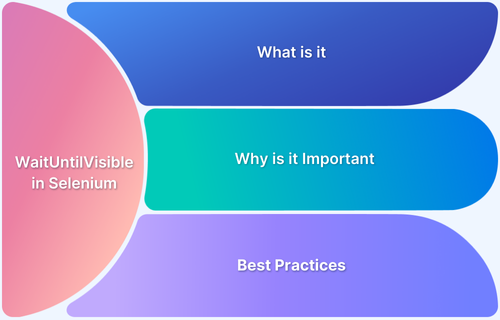Why is Responsive Design and Testing Important?
By Pallavi Ayyagari, Community Contributor and Pradeep Krishnakumar, Manager - June 10, 2019
Ever wondered why certain websites open differently on your mobile device vis-a-vis on other devices like laptops and desktops? Sometimes, this can hamper the user’s browsing experience, leading to high bounce rates and hence having an impact on sales.
Therefore, every designer and developer must consider the responsiveness of their website design, so that users across devices and browsers have a seamless experience. While this may have many interconnected challenges, what you will read below is what will not only ease you into the concept of responsive design testing but will also give you a fool-proof method to execute a successful web design.
What is Responsive Design?
Responsive design in an approach where a website responds to or realigns itself as per the device it is being viewed on – whether it is a desktop monitor, a laptop, a tablet or a mobile device. It is not just about visuals but it also considers the fact that users have now started using ‘touch’ instead of the traditional mouse for clicking a button or selecting a sentence. Thus, responsive design has now started gaining importance since what may seem easy to click using a mouse may be difficult to select with touch.
With the increasing usage of smartphones and the internet, responsive web design has become the need of the hour.
Elements to consider while testing responsive designs
Here is a list of things you need to consider while you’re testing the responsiveness of your website:
- Text, controls and images must be aligned appropriately
- Hover and selection must have highlights and color changes
- Suitable clickable area must be present for touch-based devices
- Colors and gradients must be checked for consistency
- Padding around edges must be checked
- Images, text, controls and frames should not run into the boundaries of the screen
- Font size, style and color must be consistent for each type of text
- Data scrolls and displays must show up properly
- Pages should be readable on all resolutions
- Navigation should be simplified across web pages
- The horizontal bar on the page should be kept away
- The graphics used and the download speed must be kept in check to ensure content on different devices don’t break
In order to better streamline your testing processes, BrowserStack has created a detailed responsive design testing checklist.
Challenges in testing responsive designs
With increased access to mobile data and Wi-Fi, users have been spoilt for choice when it comes to finding information online. This has led to many businesses revamping their existing websites into responsive ones. Responsive designs help their customers navigate between pages with ease and precision making it easy for them to access content on the go. However, there are certain challenges that developers generally face while making a website design responsive. As more and more online companies and corporate giants move into responsive design, it is important for us to understand the limitations that come with it.
Two major challenges faced in responsive designs today are:
- Navigation – Many users, especially on mobile, find it difficult to navigate through a website and actively look for a solution they have seen on their other favorite websites. One common solution has been the ‘three bar’ hamburger menu on the top left or right corner of the webpage. However, that might not work for all companies. Hence it is important for designers to make the process of navigation more intuitive. Understanding the website’s Information Architecture and studying how a user navigates through the site is the only way to make a smart navigation system that intuitively works for users.
- Loading time – Creating rich experiences that load fast does not usually work hand in hand. Every company likes to focus on showcasing rich content on their website. However, the aha moment happens only when the website loads before the users lose patience.
Thus, having heavy elements and prioritizing on rich experience at the cost of high load time might not be a good idea. A classic example here would be Google, which has always kept its home page simple and devoid of any rich content, to keep load time very low. However, that might not work always, since users visit some websites primarily to engage with rich content.
Therefore, Product Managers, Designers and Developers must find the right balance. Also, developers could adopt techniques like lazy loading or conditional loading, where what a user is looking for is what is loaded before other data available on the website.
Page Load time is also an important criterion for SEO.
Testing of responsive design on multiple devices and browsers is a major challenge
While responsive designs work well on multiple devices, it often takes longer to design and develop. It also adds another challenge when it comes to testing. In order to comprehensively test and find bugs, a QA team will have to test on multiple devices, operating systems, browsers and their versions. Imagine having to test the product page on Safari on an iPhone X as well as on Internet Explorer 7 on a Windows 10 laptop and on Firefox 64 on Android Oreo. Each combination creates its own test case. Therefore, an engineering team must budget for time, cost and resources before implementing a responsive design for their website. Using cross browser testing tools and automating your tests using selenium can help speeden your testing and deployment cycle.
The impact of responsive designs on businesses
Today, many new businesses are adopting responsive design in order to create a seamless experience for their users. It is a proven fact that 70% of bounce on a website is due to poor UI/UX and hence responsive designs are of utmost importance for the online health of a business.




